Step inside 9 eerie abandoned hospitals frozen in time
Eerily empty hospitals left to languish
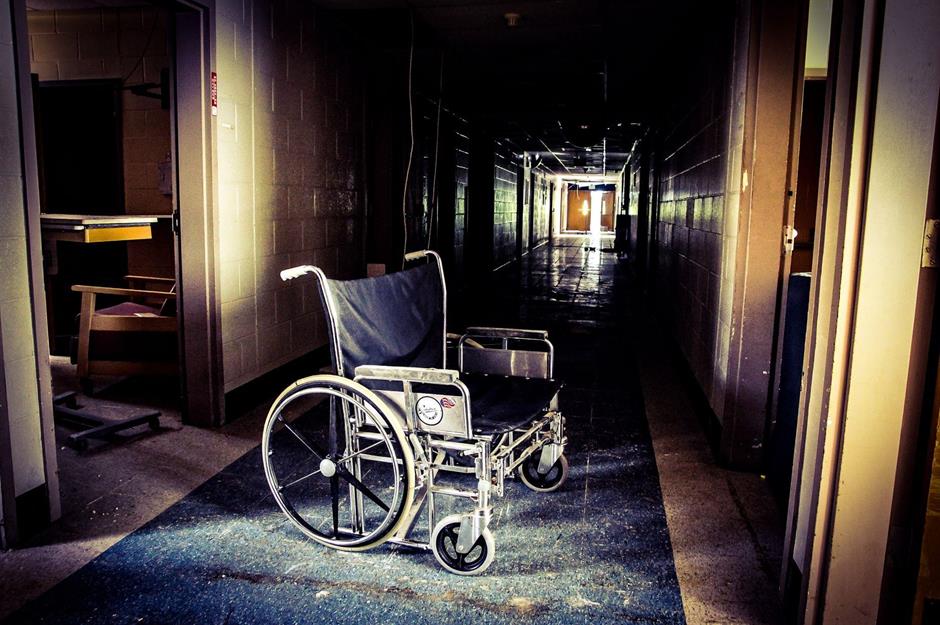
Ever wanted to peek behind the creaky, cobwebbed doors of an abandoned hospital? Now you can, thanks to photographer Leland Kent of Abandoned Southeast. Inside, you’ll uncover their tragic pasts and see the shocking devastation and decay left behind after years of neglect, plus the horrifying remnants of medical practices that would be outlawed today. Feeling brave? Click or scroll on and let’s take a look around…
The derelict community hospital
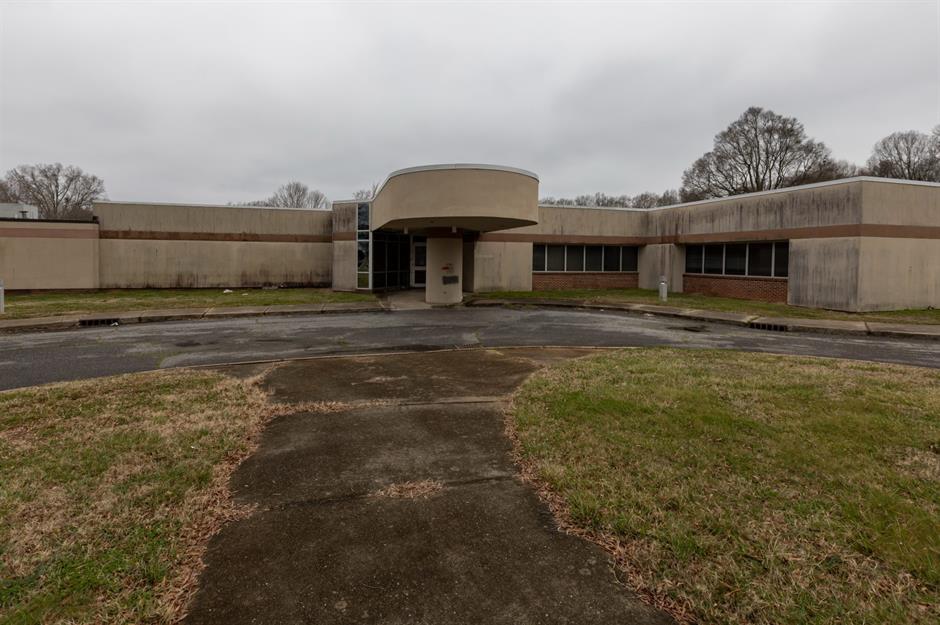
Behind this uninviting murky gray concrete exterior stands a hospital that was once vital to the health of a small rural community. Mirrored glass and a jutting, heavy concrete entrance supported on a mammoth concrete post date the design to the second half of the 20th century. Locals were involved from the start, raising money to match a government grant so it could be built, according to Abandoned Southeast.
Care for all
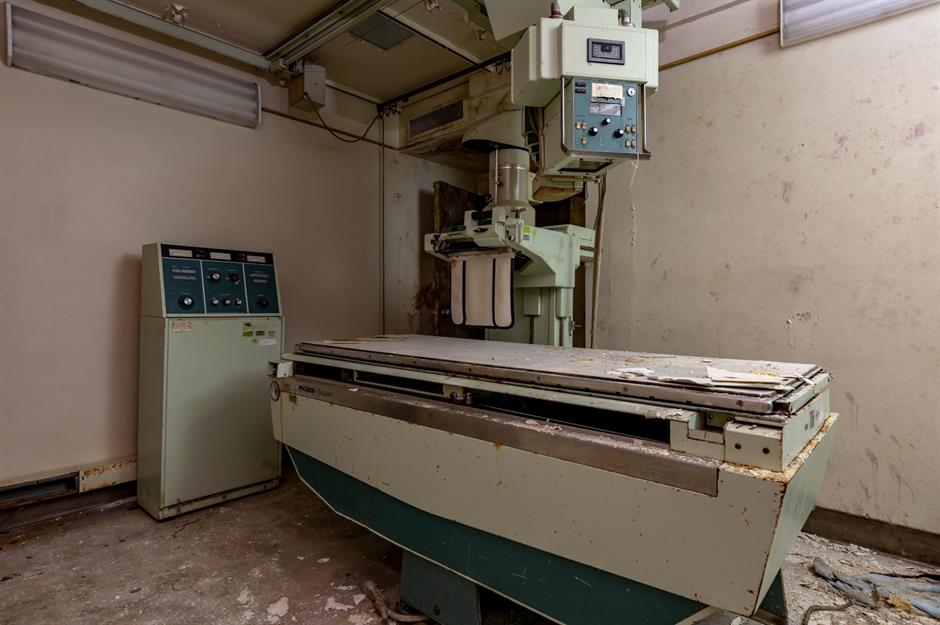
While not equipped with the most modern tech – as you can see here in this terrifying array of medical machinery – the new hospital had an emergency room, surgical suites, an intensive care unit, a women’s health department and 60 patient beds. Best of all, the care was for everyone – even if you couldn’t afford to pay.
Financial woes

Unfortunately, finances became a problem, with the hospital reportedly sinking under the weight of debts owed. By the 1990s, the town's residents protested at a council meeting to prevent the hospital from closing. Instead, it was taken over by a larger facility with the aim of getting the budget back on track. Here you can see inside one of the operating rooms, now stripped of equipment, with its walls and ceiling crumbling.
Closed for good
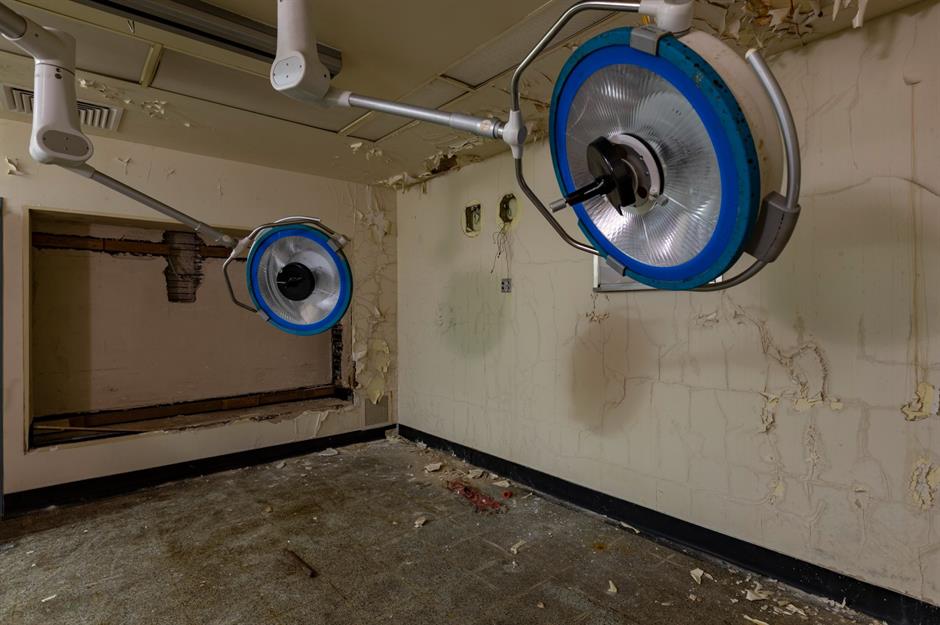
Sadly, the hospital flatlined with no hope of revival. Departments closed and facilities dropped away, as did patients. The debt was too large to recover from so the institution closed. Most of the hospital's contents were sold off, aside from these two lights left behind in the operating theatre, which were perhaps too difficult to tear down quickly. Now they loom over the vacant room, like a pair of spooky, watchful eyes.
A second life
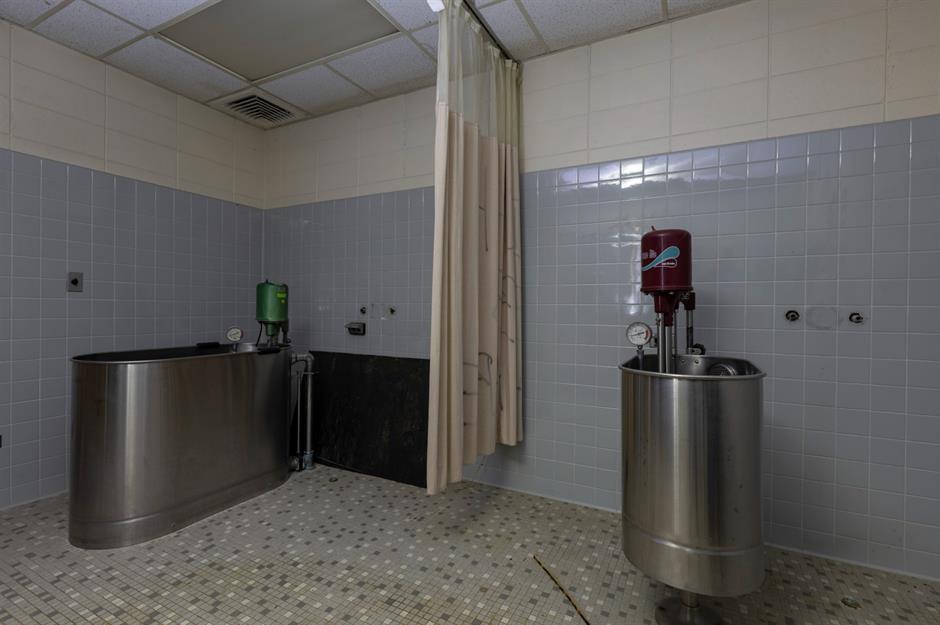
With a narrow metal hydrotherapy bath, this washroom looks terrifying. Not somewhere to relax! On a brighter note, the new owner leased the site back to the city for $1. These days it’s used for community events, such as farmer’s markets and annual festivals. Part of the building has even taken on a ghostly guise as a haunted house attraction, complete with fake blood, gore and creepy monster dolls – yikes! This spooky second life proved a success, raising $30,000 in one month.
The abandoned prison hospital
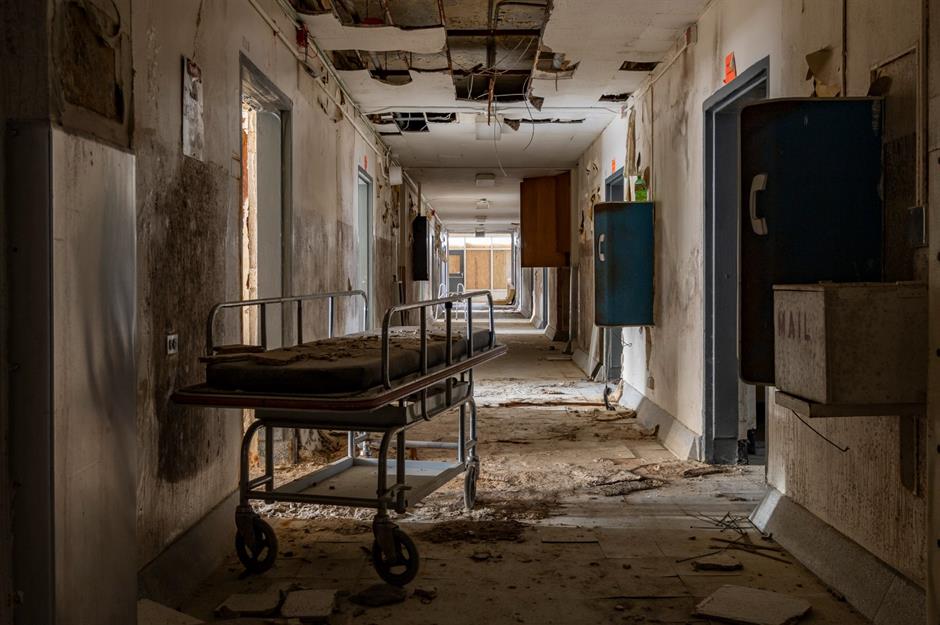
Decades of grime surround a solitary gurney left eerily adrift in this crumbling prison hospital. Notice the black mold inching up the wall, while wiring in the ceiling swings down, uncovered by missing tiles. Untouched for some time, you can see the old telecom system inside two large wall boxes, and even a rusting mailbox.
A science lab in disarray
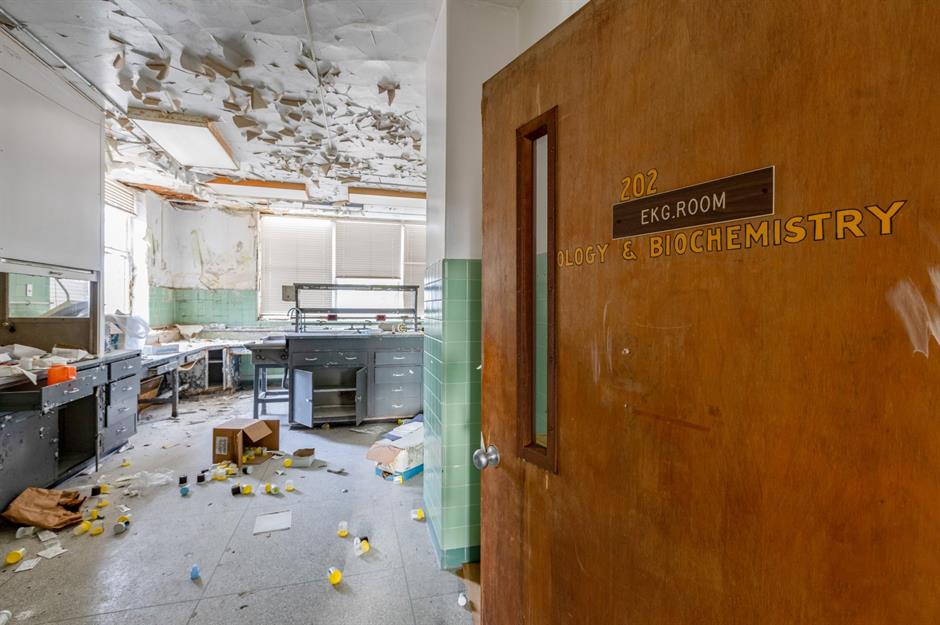
Starting life as a tuberculosis hospital in the early 1900s, the clinic treated people infected with the deadly disease who couldn’t afford a doctor, according to Abandoned Southeast. Through the open door of this laboratory, you can see sample pots thrown on the floor. The metal workstations in the biology and biochemistry lab have drawers and cupboards flung open, with bottles of chemicals carelessly left behind.
Decaying patient ward
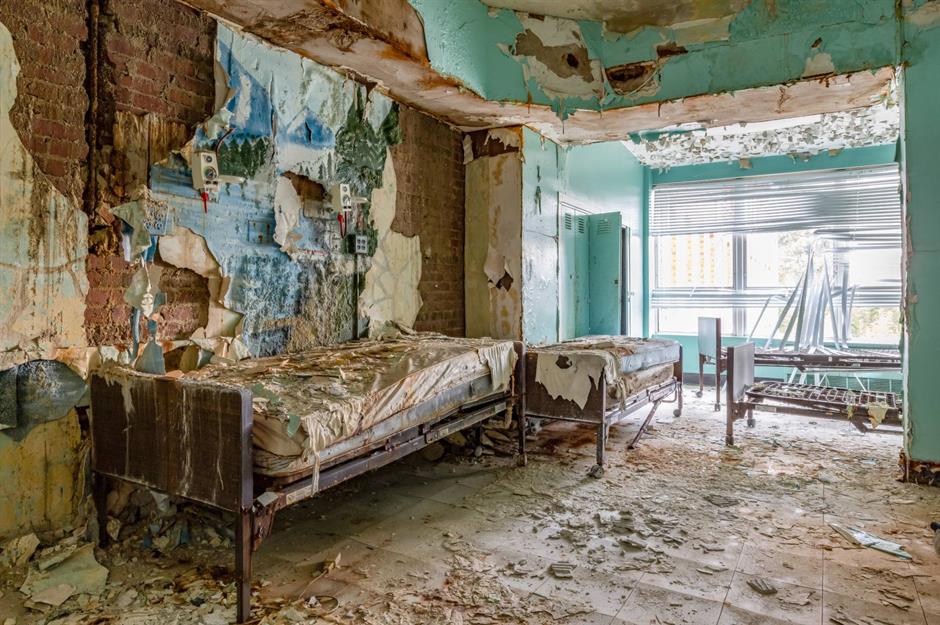
A jaw-dropping level of decay has enveloped this room, with brick walls exposed and peeling paint and debris littering the floor. Torn shreds of a mural cling to the wall, while the window blinds have been bent. This is a big room with multiple hospital beds, so it may have been an intensive care unit or a regular ward.
Repurposed for the prison system
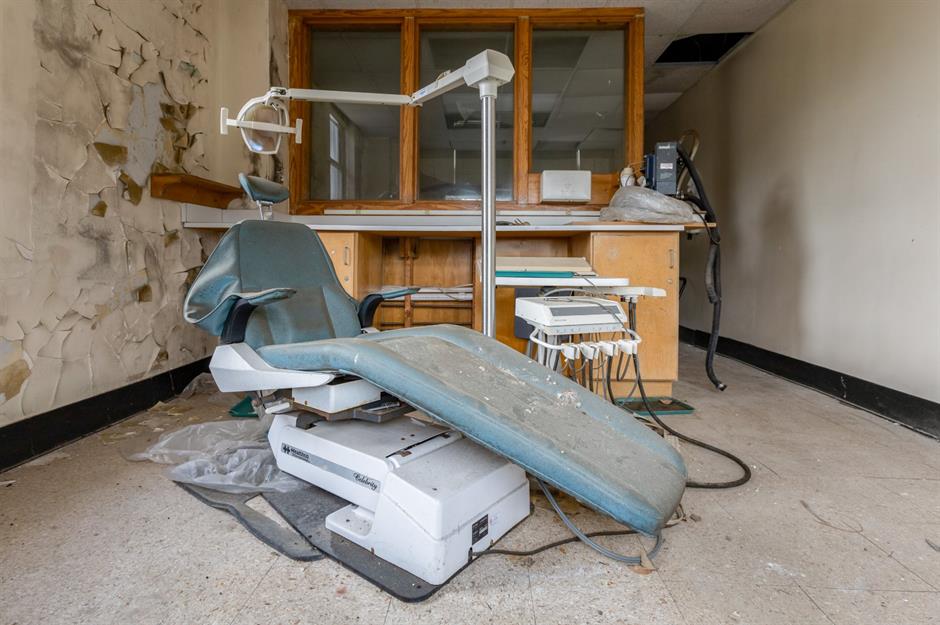
By the 1980s, tuberculosis was in decline, so the hospital was transferred to the prison system. It became a minimum-security health facility for male inmates. This dental chair looks like it dates from the 1980s, with a tangle of wires attached. Still containing curious medical artifacts, the mask-like apparatus looming over the chair looks a bit scary!
Well-preserved library

Look at this impressive prison library. Remarkably undamaged despite the disarray, it's fared better than the other rooms in the facility – the books on the shelves are even still in subject order. State budget cuts within the Department of Corrections meant declining funds for the prison hospital. It closed in 2010 – and has been abandoned ever since.
The Bad Debt Hospital
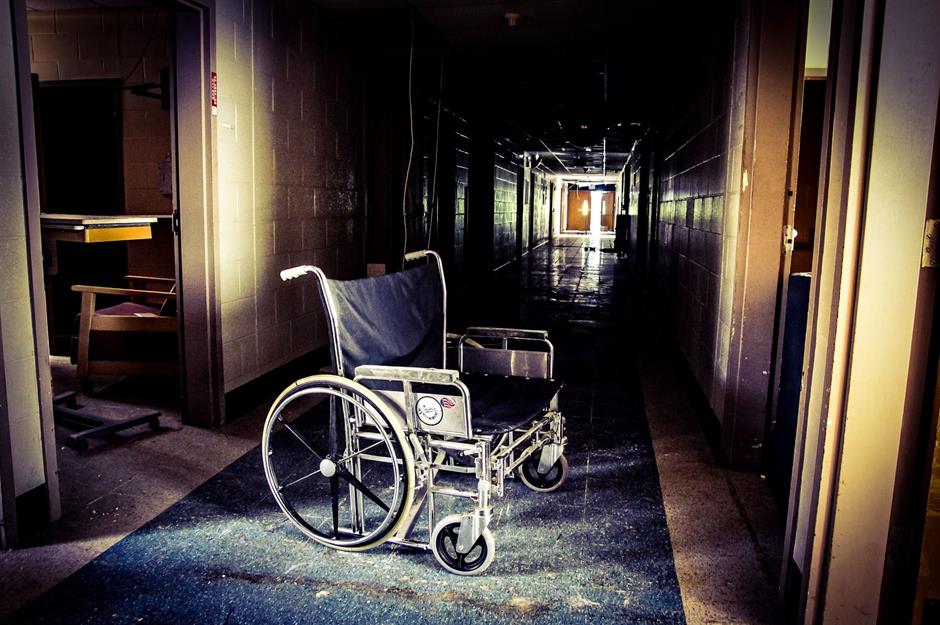
A gloomy corridor inside the Bad Debt Hospital in Georgia looks like something from a horror movie – and with a nickname like that you can guess the story isn’t a happy one for this derelict medical center. Built in 1968, the 52-bed hospital had an emergency room, intensive care units and employed 150 staff, according to Abandoned Southeast.
Abandoned operating theatre
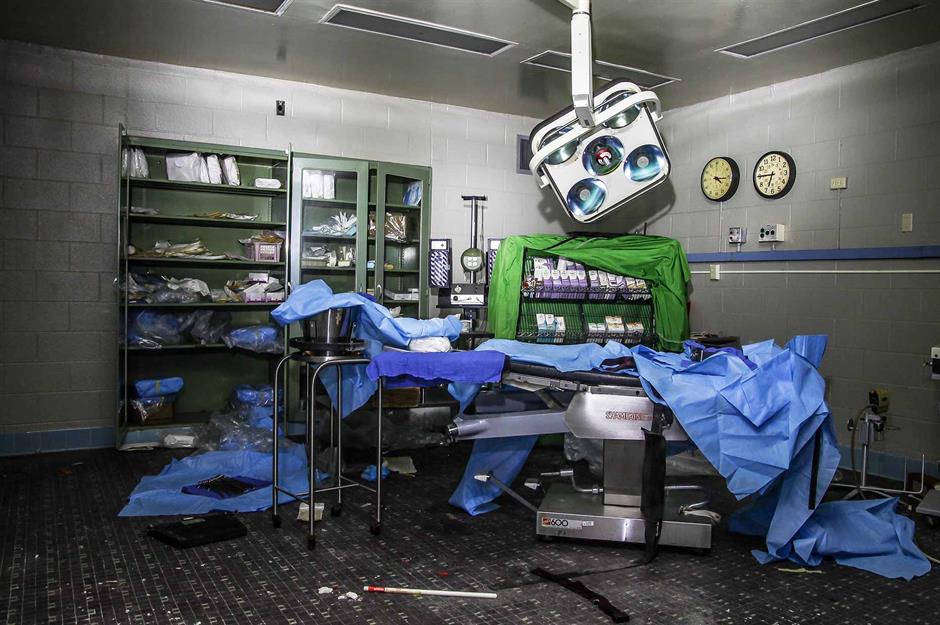
Look at all the discarded medical machinery in this eerily empty operating theatre. Imagine the outdated tech spookily whirring back to life! According to Leland Kent, the hospital's downfall was a corruption scandal that quickly pushed the hospital into financial trouble. It closed its doors in 1974, however, it reopened in 1985 after a non-profit organization leased the facility from the County Authority.
Change of hands
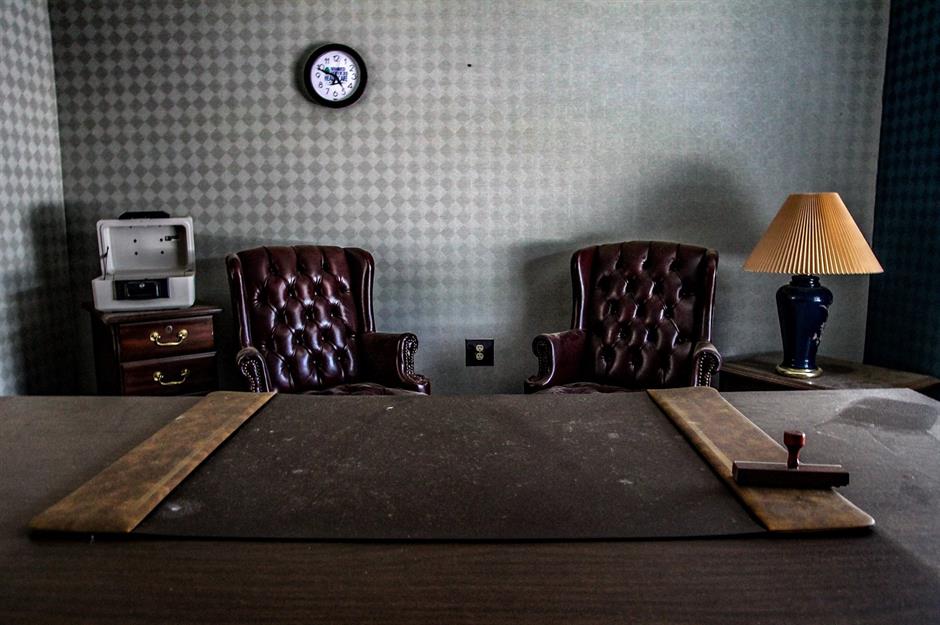
But instead of a fresh start, the hospital was reportedly close to $1 million in debt by the early 1990s. A management company was given control to prevent another shutdown. It’s strange to see these amazingly well-preserved wingback armchairs upholstered in smart leather in such a derelict building. This space looks like this could be a director’s office, with a fancy lamp, wooden drawers and even a hospital rubber stamp still on the desk.
Mismanagement allegations
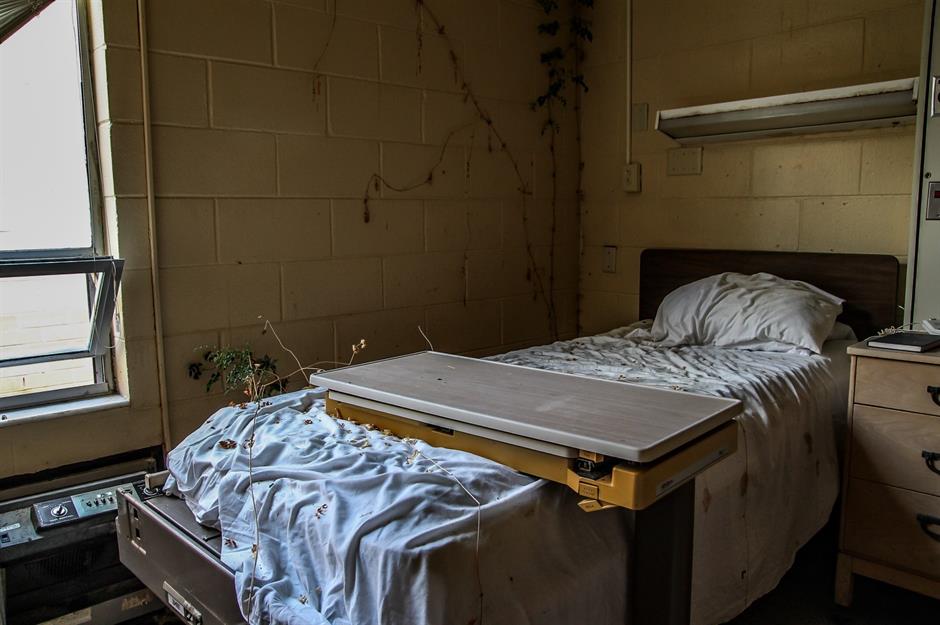
Financial mismanagement blighted the facility, with suspiciously dwindling funds red-flagged by a governing body. They also found the hospital didn’t have enough insurance to cover the emergency room doctors. The sheriff, lawyers and hospital authority representatives busted into the office of the management company’s CEO in 1998, demanding his resignation, according to Abandoned Southeast. He quickly complied. Now, Mother Nature is reclaiming the wards, with trailing vines growing up the walls.
Frozen in time
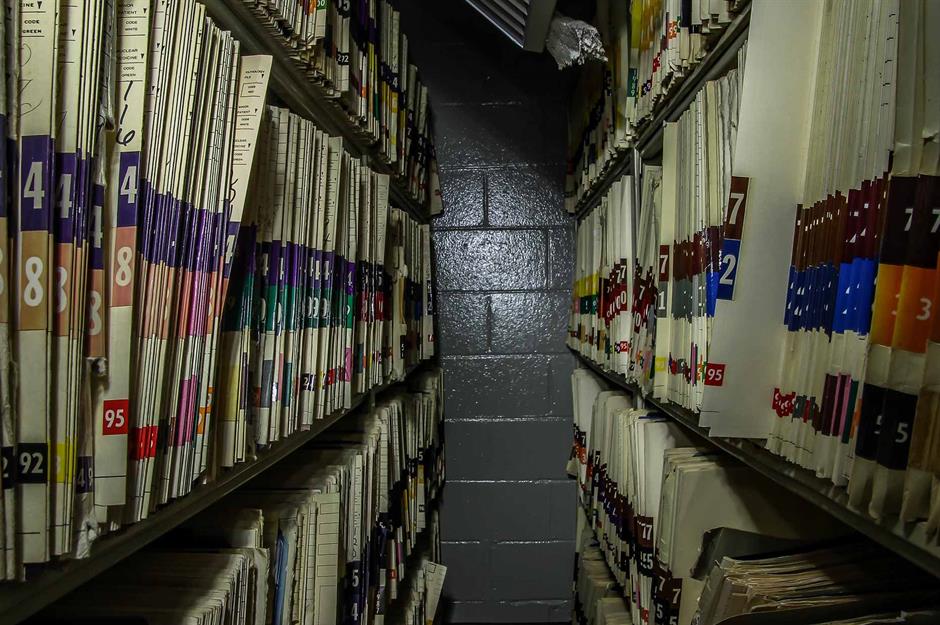
By 2001, it was over for Bad Debt Hospital, with cuts to Medicaid sealing its fate. Staff were laid off, then the doors were closed for good. Nobody returned to salvage the equipment. Vandals quickly broke into the deserted building, reports Abandoned Southeast, and valuable copper wiring was stolen. Moldering patient records, as well as time-warp hospital technology, remain trapped inside this medical mausoleum.
The decaying mental health institute
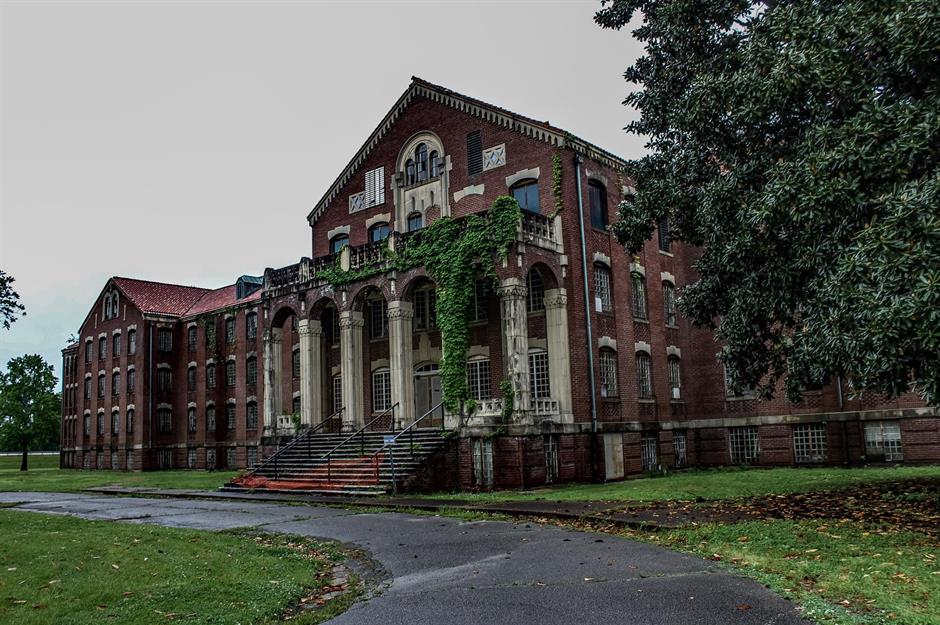
A haunting Gothic Revival-style institution hiding a dark past, the imposing main building has steeply-pitched roofs, corbelled brick cornices and arched windows. Created by the McDonald Brothers in the mid-1880s, it follows psychiatrist Thomas Story Kirkbride’s design philosophy to promote good health for patients with therapeutic surroundings. Because of this, it's located on a 1,140-acre hilltop farm and buildings are staggered so each block enjoyed plenty of sunlight, fresh air, privacy and garden views.
Empty observation rooms
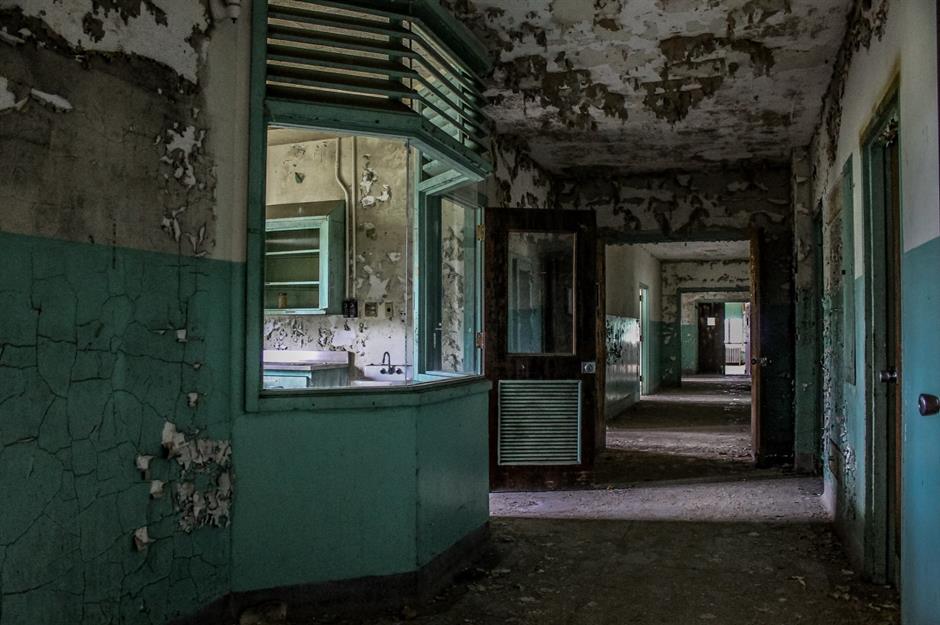
But these days it's a shadow of its former self. Paint is peeling off the walls and ceiling inside this corridor, which is lined with secure rooms on either side. The reason for the internal glass window may have been to keep an at-risk patient under observation. The four-storey facility opened its doors in 1889 with 156 patients. It cost $250,000 to build and had rooms for up to 350 patients.
Outlawed medical practices

This looks like a classroom or therapy room with chairs in a circle and a chalkboard still inscribed with faint instructions. But the wooden restraint chair in the middle is disturbing with its straps at the feet and waist. Horrific treatments used in the past at the hospital included insulin shock therapy, lobotomies and electric shock therapy.
Rapid development
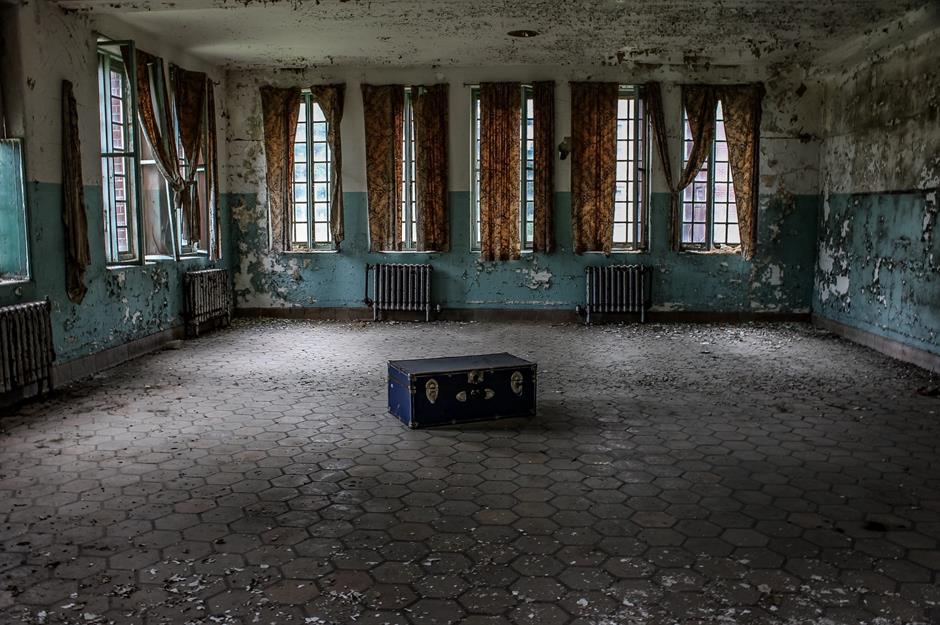
The institution grew rapidly to house more than 3,200 patients and 250 staff by 1960, with more buildings added. You can see the idea of therapeutic space in the high ceilings and very tall windows here, allowing plenty of light inside. In 2008, many of the institution’s historic buildings were demolished to create a modern $58.5 million psychiatric hospital on the site. Luckily, the Gothic Revival building was on the National Register of Historic Places, so it was not destroyed.
Patients' confiscated belongings
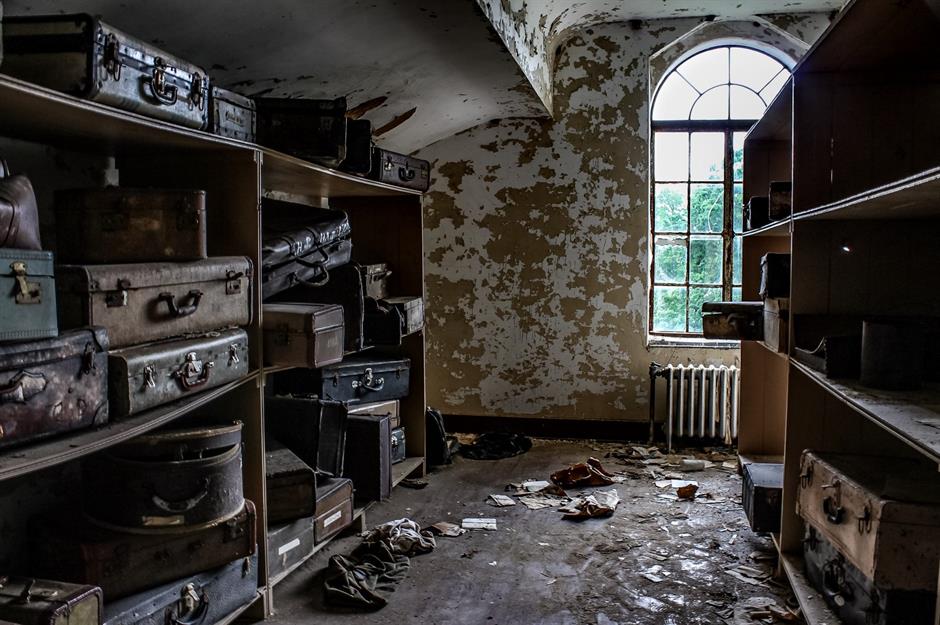
Today, the historic buildings are in disrepair. These suitcases were confiscated from patients on arrival – and seemingly never returned. The modern hospital has 2,500 patients, although only up to 300 live on site. It has an annual budget of about $35 million.
The lost rural hospital

The utilitarian exterior of this rural hospital looks pristine if a bit vacant. You can easily imagine an ambulance roaring up to the front door. But that’s not something you’re going to see any time soon as this former medical center in rural Georgia has been long abandoned.
Orderly corridors

Although the hospital has been reportedly closed for almost a decade, this corridor leading to the radiology department, with its checkerboard linoleum, looks tidy and clean. Even the pillow on the abandoned gurney looks as if it’s just been plumped!
Well-preserved medical equipment
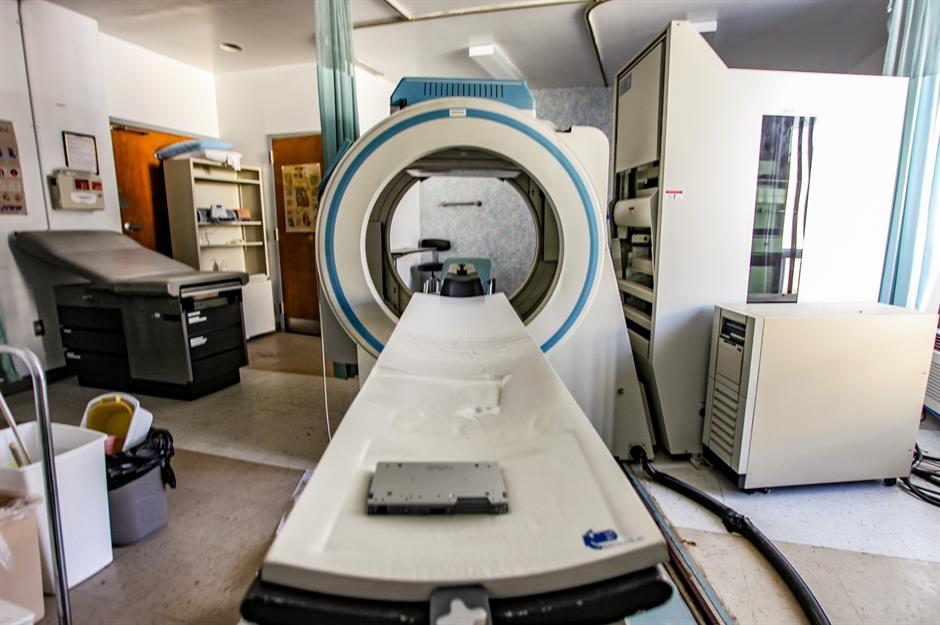
This medical body scanner, which appears to be an MRI machine, looks as if it could still run – although the technology is now 10 years out of date. While it may be a time capsule, the room has been left in a good condition, as if the doctors just stepped out for lunch. Sadly, dozens of rural county hospitals have closed across the southeast of the US. In Georgia alone, nine rural hospitals, including this one, have closed since 2005.
Financial hardship
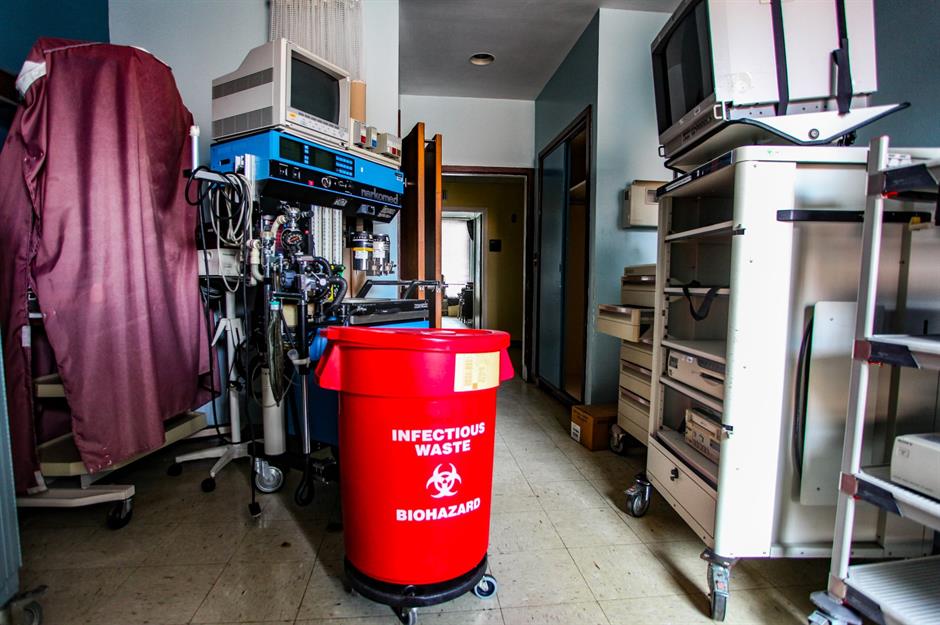
It’s somewhat alarming to see an infectious waste bin abandoned in this room! The computer monitors and other equipment here look huge compared to today’s tech. Sadly, this critical care unit closed because it was millions of dollars in debt. It was one of the biggest employers in the region so nearly a hundred people lost their jobs when it shut, according to Abandoned Southeast.
Time-warp wards
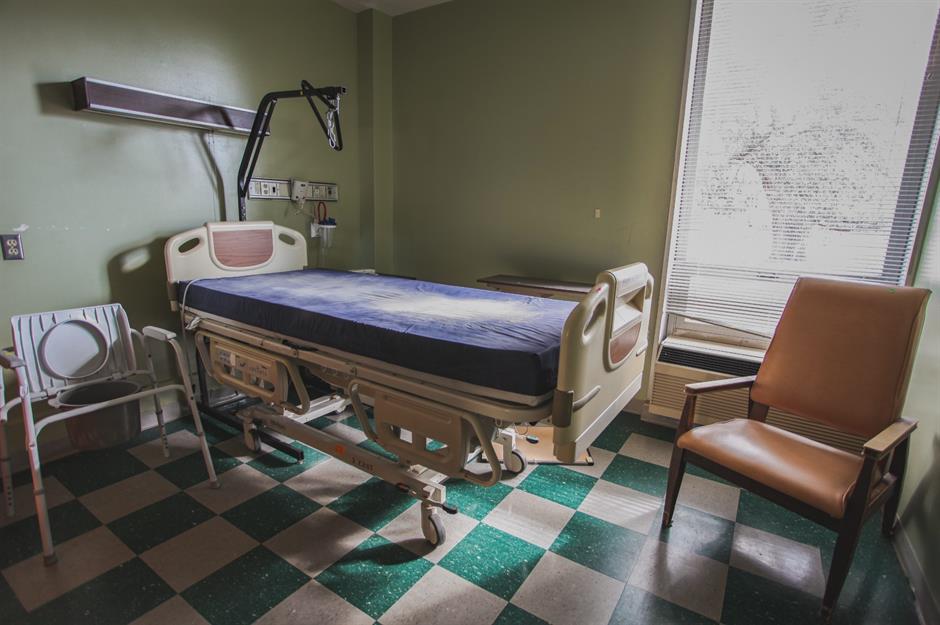
One of the reasons rural hospitals can run into financial difficulty is because patients tend to be from an older, poorer population, who often don't have medical insurance. This room looks ready to receive a patient with everything still in place, even a commode chair. Officials are optimistic the facility will reopen one day – that’s why none of the equipment has been removed. Let’s hope they’re right.
The doomed Charity Hospital
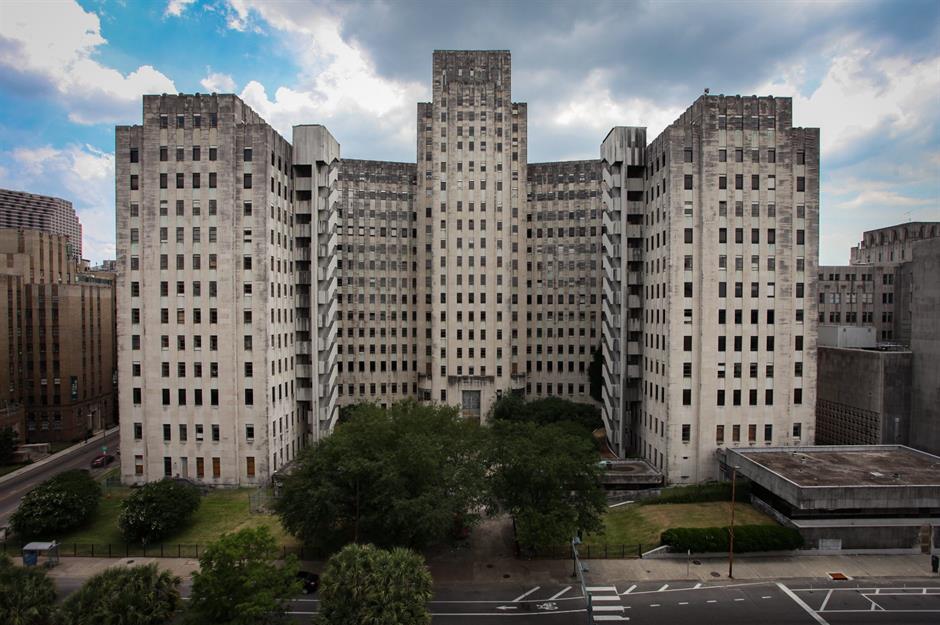
True to its name, Charity Hospital in New Orleans once offered top-quality healthcare for all. It was founded in 1736 from the estate of a French shipbuilder who bequeathed money to build a hospital for the poor. It was one of the longest continually running hospitals in the USA until its closure, operating for 300 continuous years. Occupying various premises over the centuries, these Art Deco-style curving tower blocks became the main site from 1939.
Philanthropic medical center
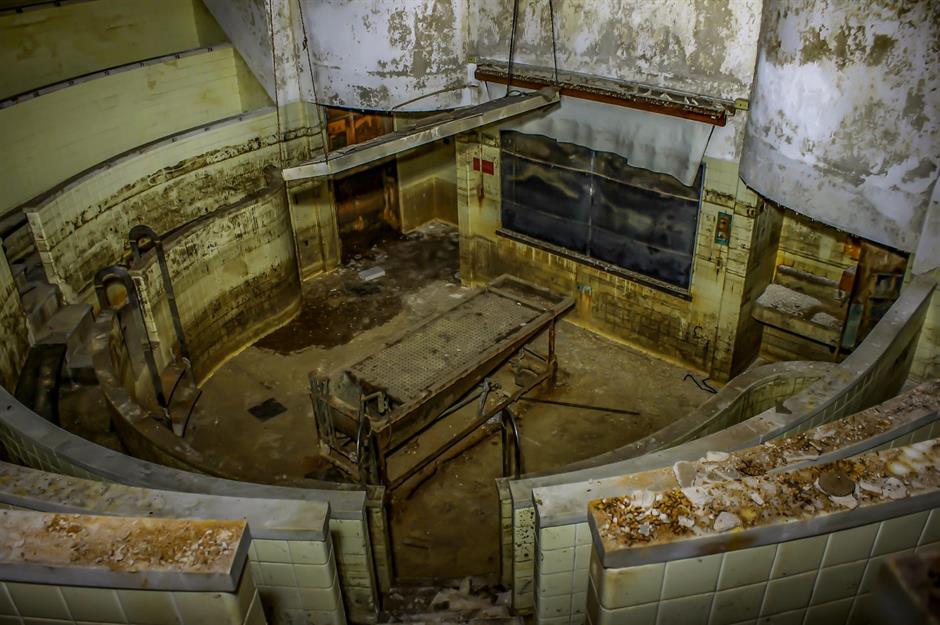
A huge hospital with 2,680 beds, it was once reportedly the second-oldest and second-largest free hospital in the United States, ever. Charity Hospital treated about 100,000 patients per year who couldn’t pay for medical care. Renowned as a top teaching hospital, this dilapidated room might have been a lecture theater for students to observe medical demonstrations.
Hurricane Katrina strikes
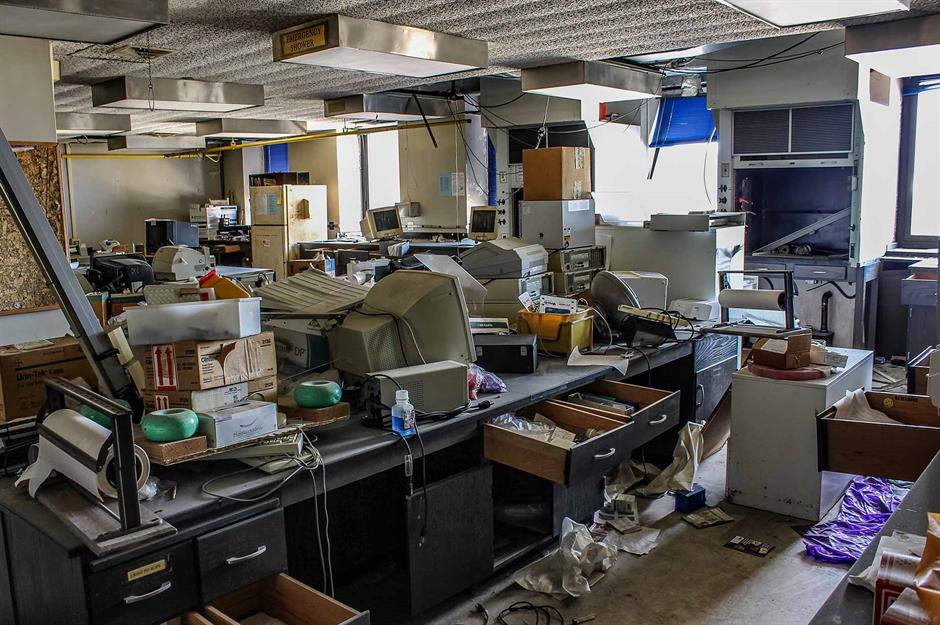
In August 2005, Hurricane Katrina hit New Orleans and the hospital's lower levels were flooded. Medical equipment was submerged and the morgue flooded, sending bodies floating down the basement hallways, according to Abandoned Southeast. About 200 patients and staff were trapped in the hospital for almost a week without power or air conditioning and with limited medical supplies and little food. Tragically, several patients died.
Funding pulled
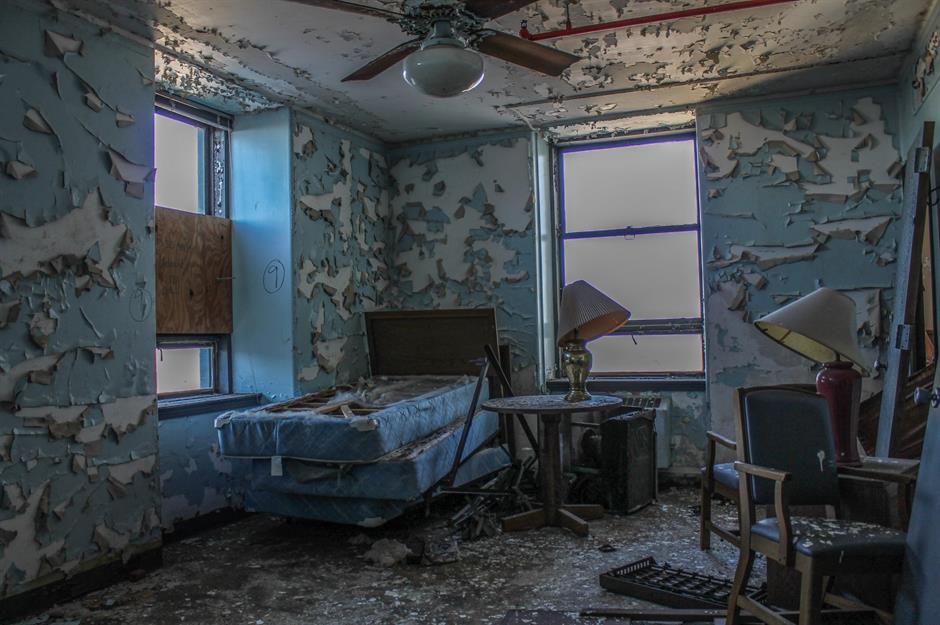
You can see the devastation caused by floodwater in this private room. Volunteers tried to get Charity Hospital running again after the hurricane, but efforts were blocked by local government, who championed building a new facility. In 2015, University Medical Center was opened, costing $1.2 billion. Unlike Charity, it offers private medical care, as well as treating uninsured people.
Multimillion-dollar development
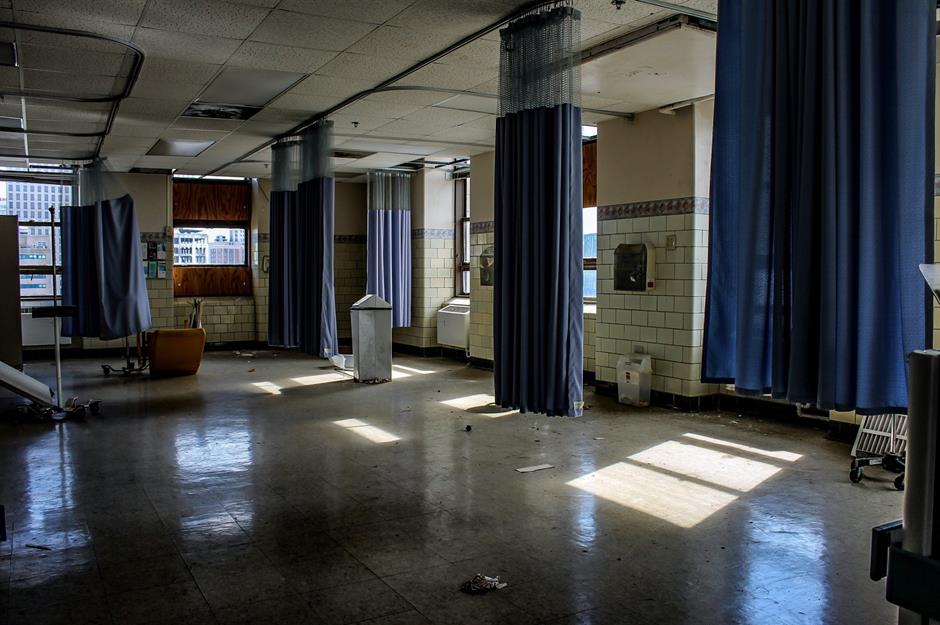
Safe from the floodwater, this upper-floor ward is stripped of furniture but structurally seems much unchanged from the day it was abandoned. At last, it seems fortunes are changing for Charity Hospital. in 2021, a $300 million redevelopment of the building was announced to create a mix of research spaces for medical students, residential apartments, a museum and shops. Let’s hope this old building can be brought back from the brink.
The derelict marine hospital
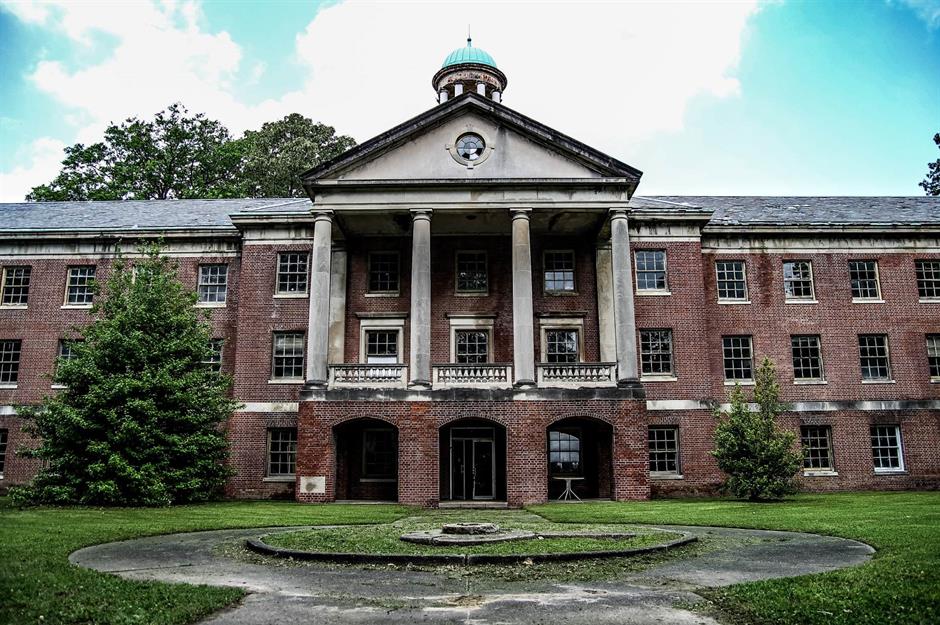
Originally created to care for injured sailors working on the Mississippi River, this hospital was a campus of six buildings, opened in 1884. It included nurses’ quarters, a laundry, a kitchen and administration buildings. The imposing neo-classical red-brick hospital block, pictured here, was added in the 1930s. Built in the Georgian style, it features a slate roof, copper cupola, limestone columns and a blue-domed bell tower.
Multitude of medical facilities
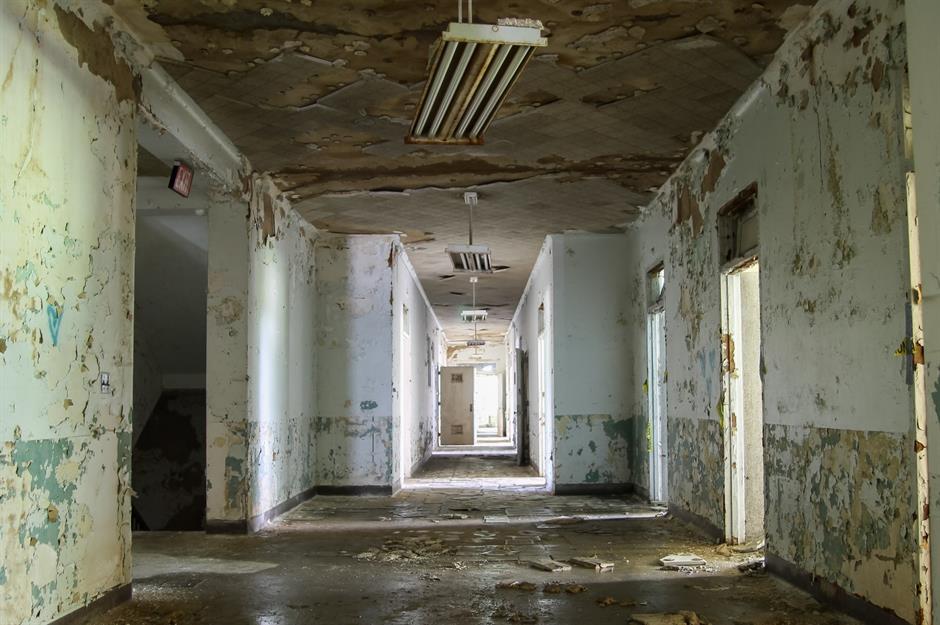
The dilapidated walls of this former hospital corridor are probably peeling due to the high humidity in the region. Each wing contained patient rooms and day rooms, while the center section had a dental ward, operating room, a sound-proof chamber for hearing tests and nurse stations, according to Abandoned Southeast.
Protected historic location
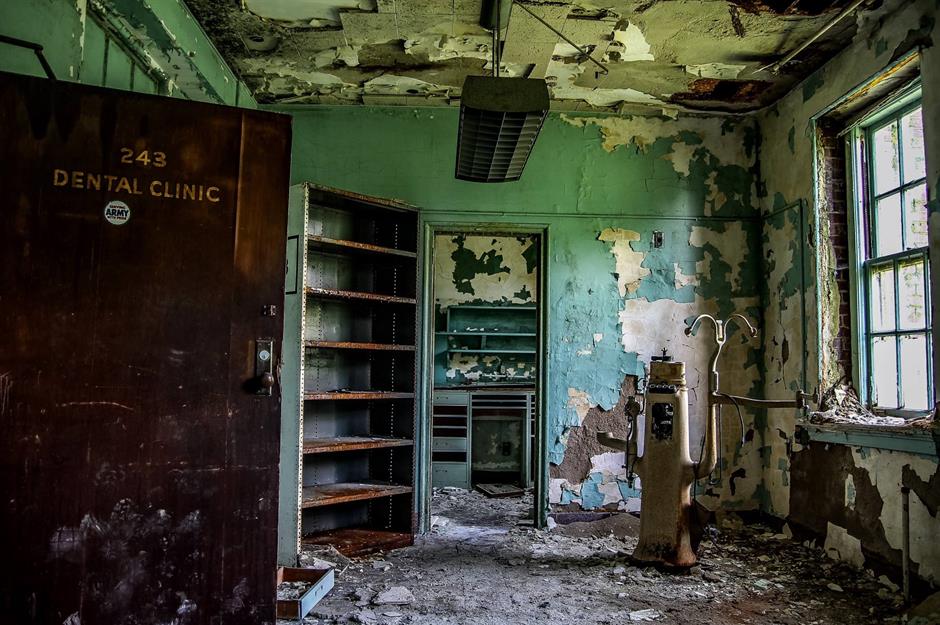
Here’s the dental clinic, with a frightening freestanding machine in the center of the room. It was probably used to attach dental tools but due to decay, it now looks like a menacing little robot with an arm raised to strike! Over the decades, some buildings were demolished and new ones created. Luckily, those remaining are now on the National Register of Historic Places, meaning they can’t be destroyed, although neglect and the elements are still wreaking havoc.
Treating the uniformed services
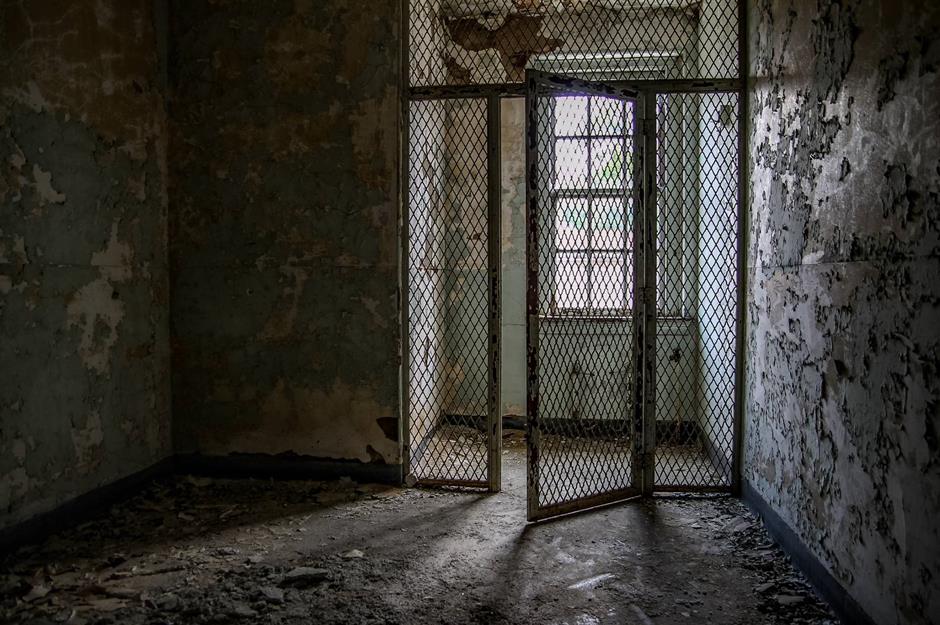
Stripped to the bone, this room bears no trace of former fixtures and fittings, though the eerie mesh door gives the impression of a cell. The facility was used by the Coast Guard, maritime cadets, armed forces and government employees injured on duty. The hospital closed in the 1960s and a museum leased half of the property, while the federal government retained the rest. In the early 2000s, authorities sold the hospital to a private buyer.
Residential conversion
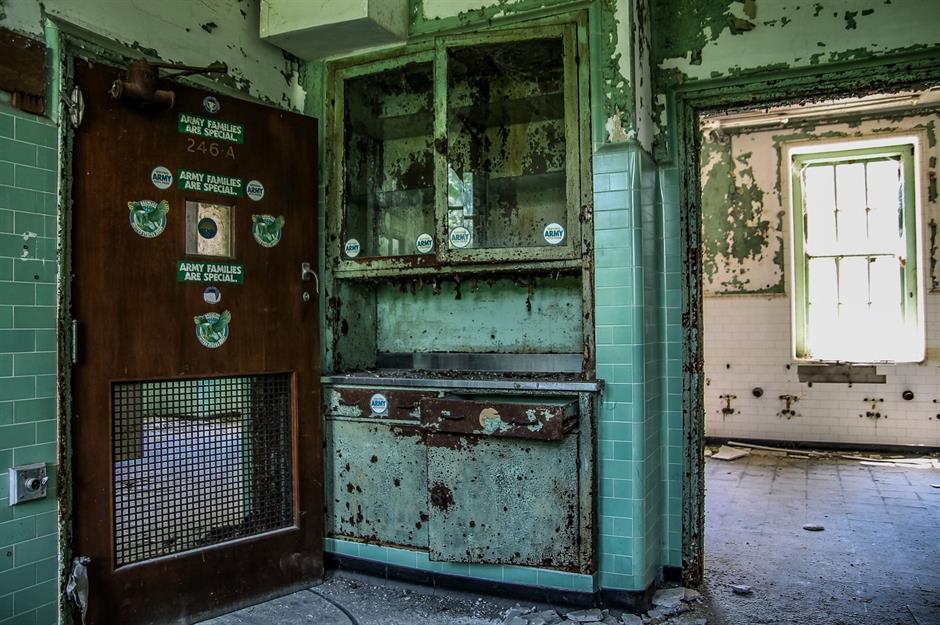
You won’t find any patient records left behind here, as everything has been carefully cleared away. Notice the army stickers on the door and cupboard, while the blue wall tiles have survived remarkably well. In 2019, construction began to convert the building into apartments, while preserving the building's historic details. It's now complete and homes will rent for $1.50 to $1.75 per square foot or about $1,000 to $3,000 a month.
The languishing mental health hospital
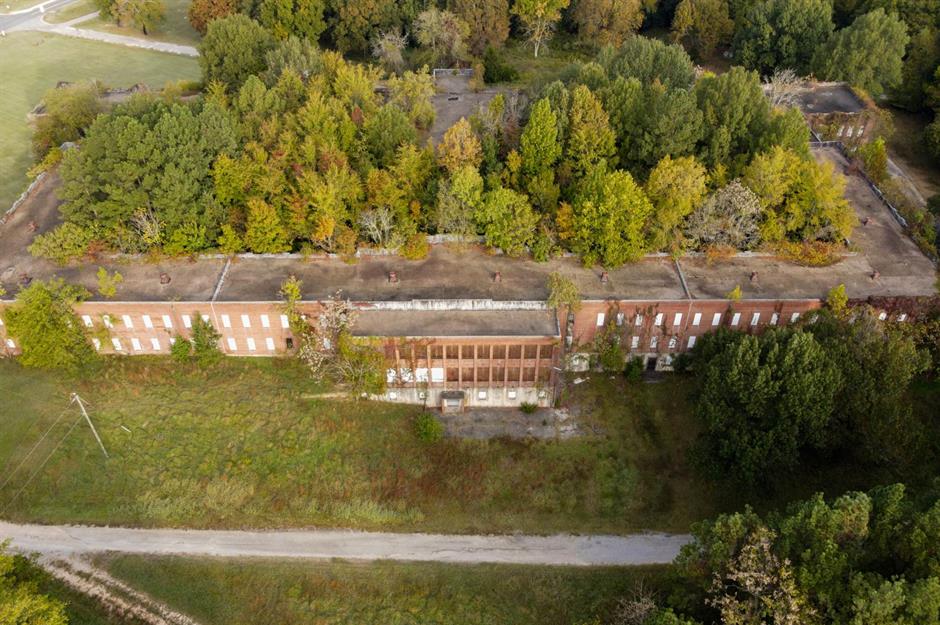
Here's a cluster of buildings that once formed part of a mental health unit, but the grand structure is now choked by trees, growing taller than its roof. Founded in 1870, it was the first psychiatric institution in the US exclusively for the African-American community, according to Abandoned Southeast. Several hundred patients were transferred here from other facilities, as well as from local jails. The hospital had a four-story admin building surrounded by three-story wings housing six wards.
Sinister secure wards
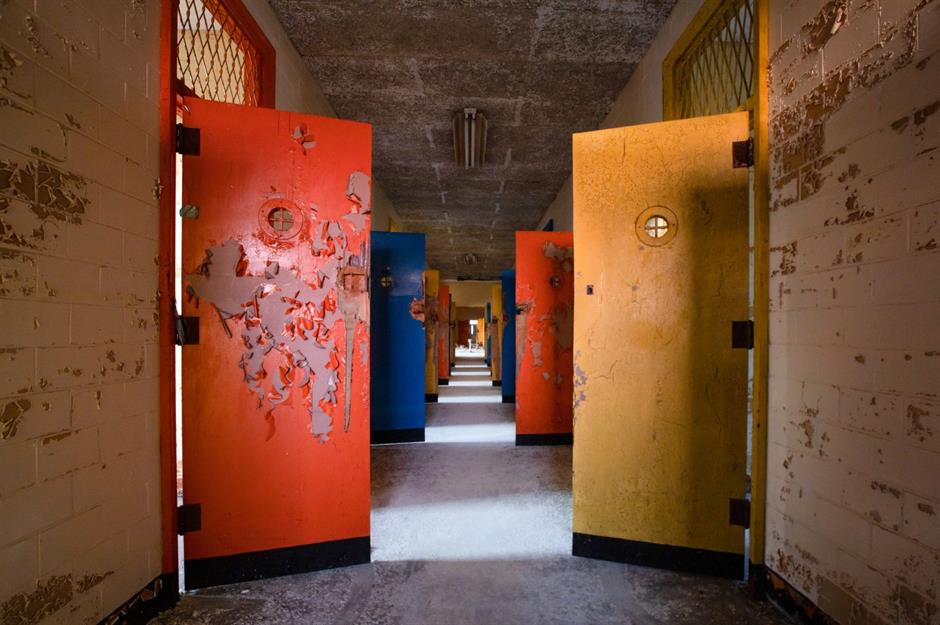
The eerily bright hues of red, yellow and blue across these internal doors feel oddly discordant, especially given the hospital's sinister past. New buildings were added regularly as the patient population increased. Each building housed patients according to their diagnosis, including wards for people with chronic illness, tuberculosis, epilepsy and psychosis.
Work and recreation
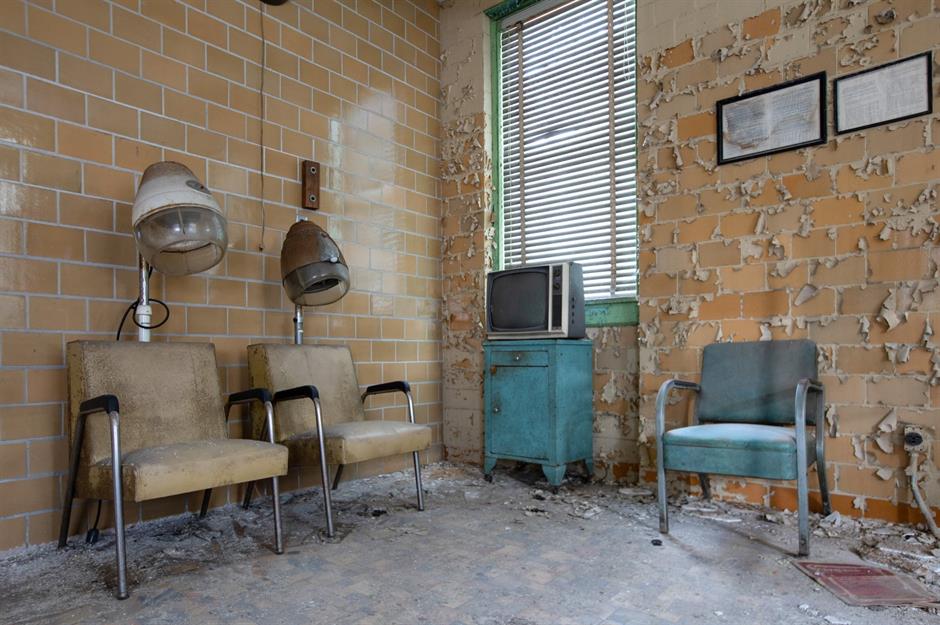
Look at this old hair-styling equipment abandoned in a communal recreation room, which also features a vintage TV in the corner. It’s strange to see the faux-brick wallcovering peeling off on one side of the room but not the other, perhaps as a result of damp. The asylum provided a balance of work and recreation, with patients growing peanuts, wheat, okra, watermelon, pumpkins, radishes on the site’s farmland. But medical practices, including seclusion, mechanical restraints, hypnotics and worse, were undoubtedly cruel.
Abhorrent practices
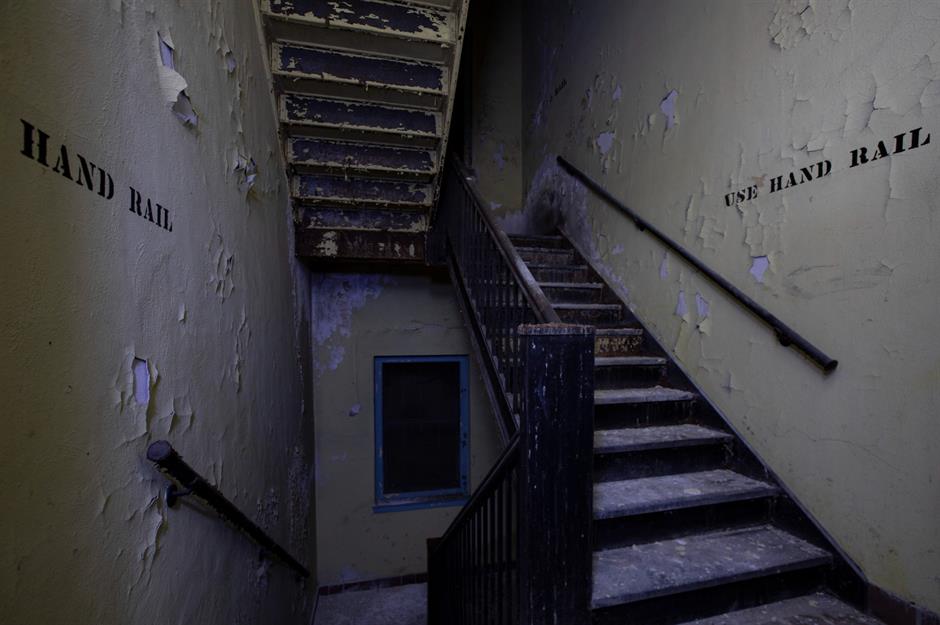
This dingy stairwell looks super-spooky with its cracked paintwork and stern stencil lettering. By 1950, the facility was badly overcrowded, with almost 5,000 patients. One ward is said to have crammed more than 300 patients into a room. So, extra buildings were built, including a geriatric unit and a maximum-security forensic unit. Shockingly, in 1980, investigative reporters discovered documents that showed more than a thousand patients had been sterilised between 1924 and 1952.
A shameful past
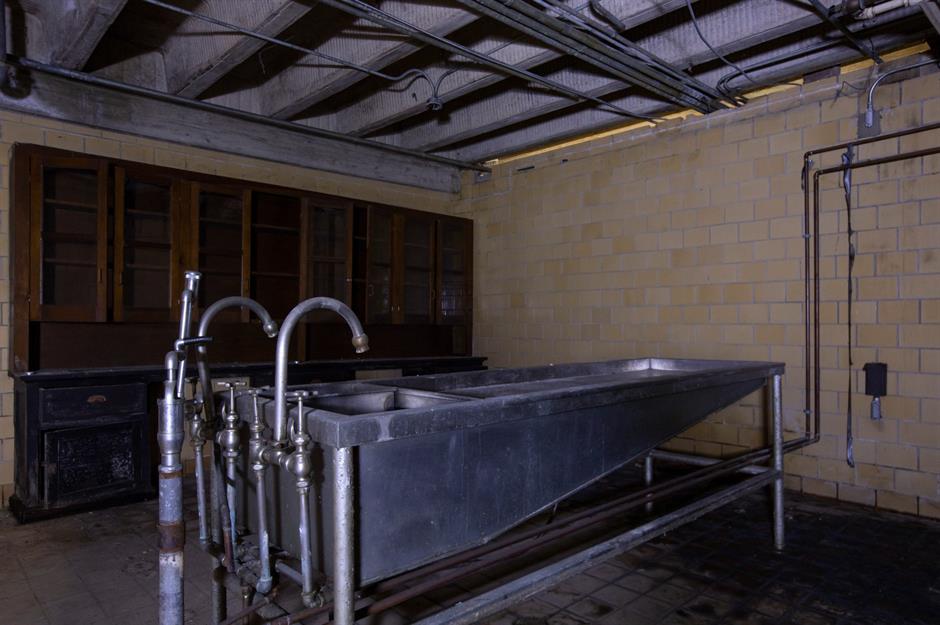
The metal hydrotherapy baths pictured here look uncomfortable and a little sinister in this crumbling room, where ceiling tiles have fallen away to reveal wiring. The hospital was eventually desegregated and has admitted all patients since 1968. A 1990s investigation into the facility found numerous abuses, including excessive use of restraints. The hospital is still open today, having relocated to newer buildings, while the older structures slowly decay and become swallowed by greenery.
The crumbling tuberculosis sanatorium
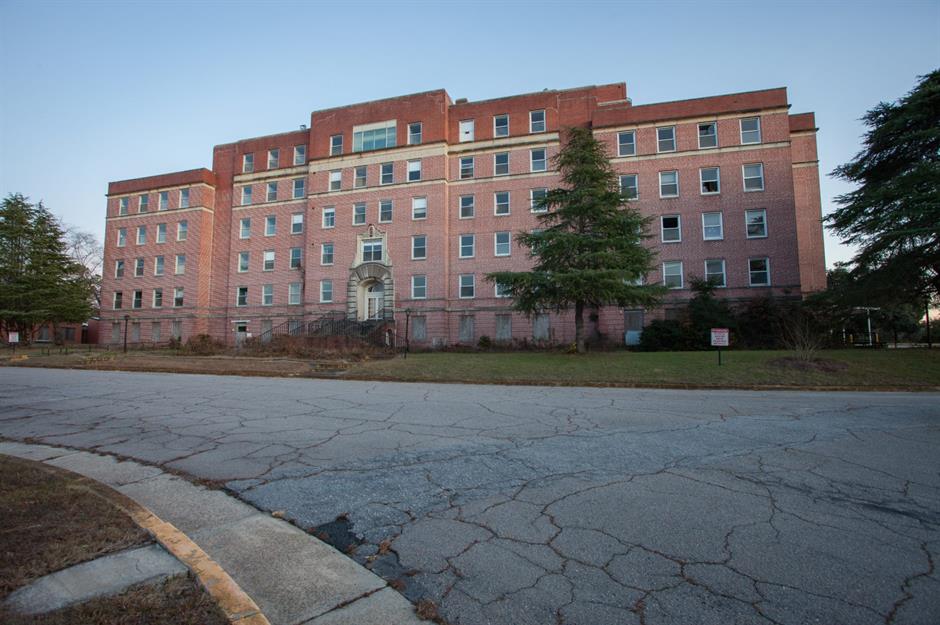
This towering red-brick building is built like a fortress and for good reason, as behind the imposing six-story walls lurked a killer disease. The hospital treated patients suffering from tuberculosis (TB) – a contagious bacterial infection usually affecting the lungs. By the 1900s, it was one of the top two causes of death in the USA and had become a public health crisis.
Long-term treatment
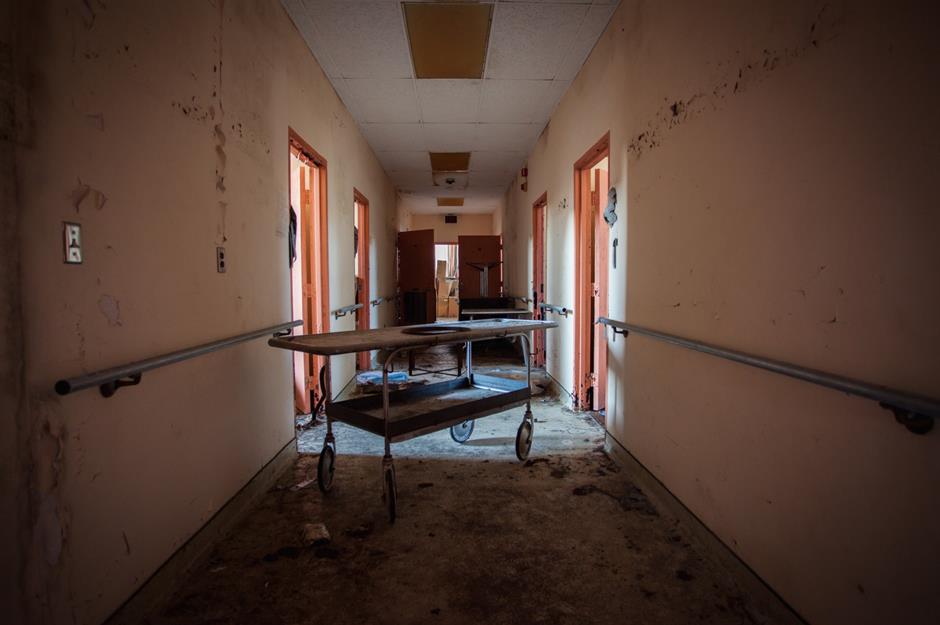
In this dim, dirty corridor in the hospital you can see a graying gurney and walls speckled with damp and decay. As the government took responsibility for public health measures, sanatoriums became thought of as the way to control the spread of the disease. The word ‘sanatorium’ roughly means ‘place of healing’. But once you were admitted, you were likely there for long-term treatment.
Opened at the height of the epidemic
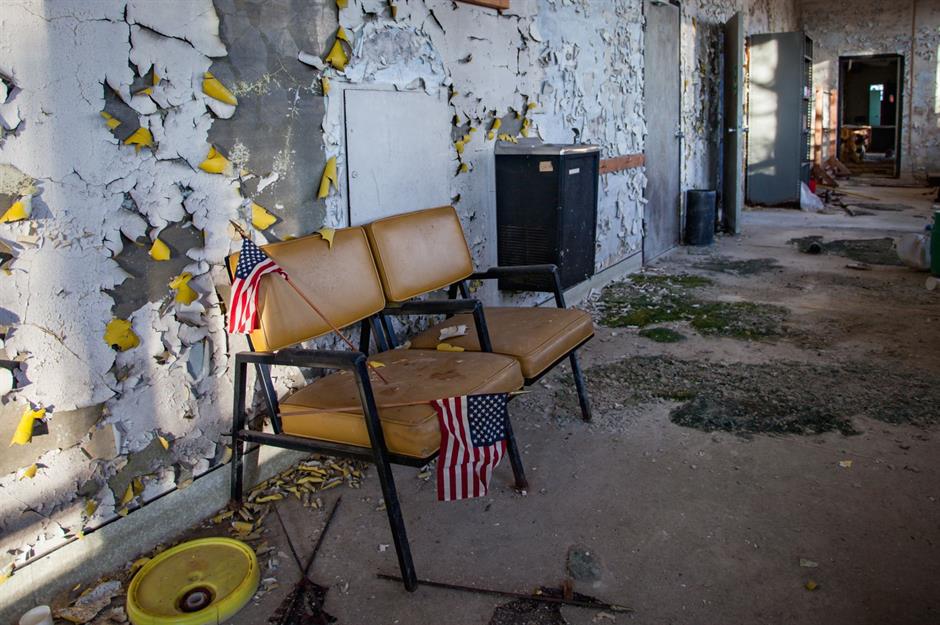
Patriotic flags abandoned on these unspoilt mid-century modern chairs contrast oddly with the wide-spread damage to the walls, and the moss peppering the concrete floor. TB was an indiscriminate killer, targeting the young as well as older people. Construction began on the large hospital in 1936 and it opened its doors in 1938, offering 268 beds, according to Abandoned Southeast.
Overcrowded corridors
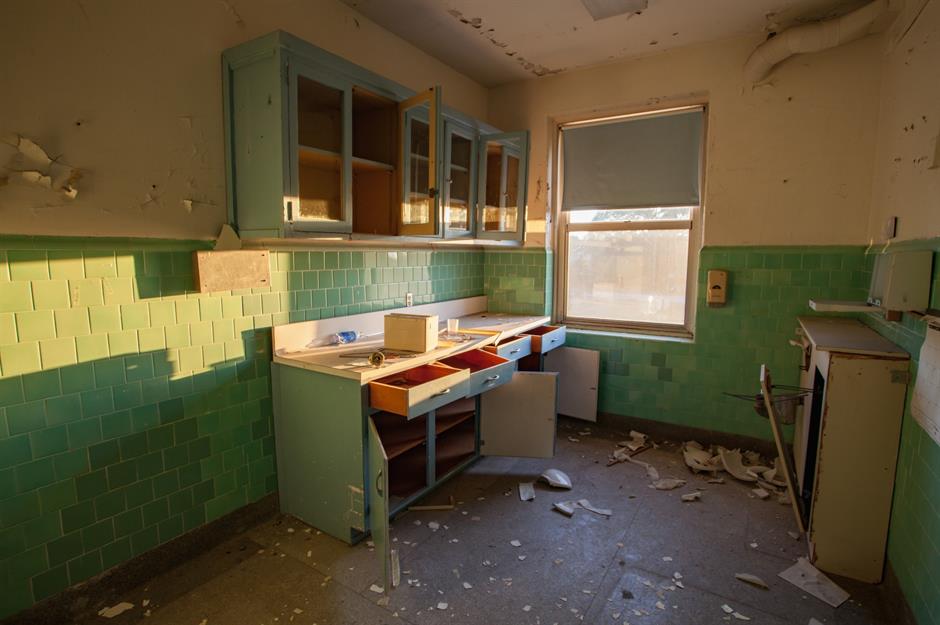
This ransacked room features a smashed ceramic washbasin and drawers flung open. When the hospital first opened, there was no cure for TB and it was often considered a death sentence. As the disease was so infectious, the sanatorium quickly ran out of beds, leaving patients horrifically crammed into hallways. Some patients are said to have spent years locked in quarantine.
Modern science finds a cure
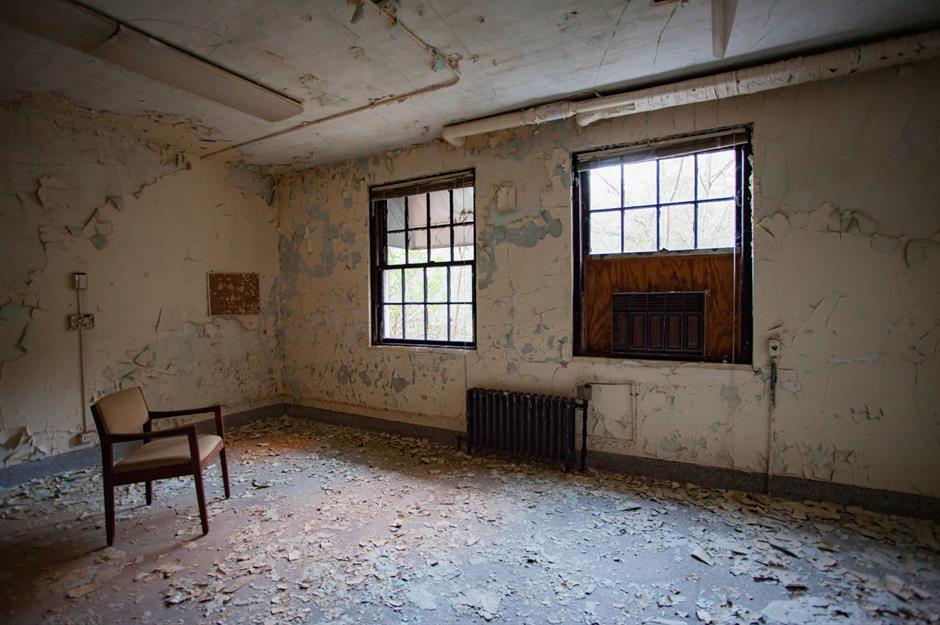
In this room, a solitary chair offers a reminder of all the patients who once occupied the halls of the hospital. Thankfully, an antibiotic cure for TB was found in 1943. Further antibiotic discoveries in 1965 resulted in the successful widespread treatment of the disease. Happily, patient numbers declined and as a result, the sanatorium closed in the 1980s. You can see more of Leland Kent's incredible photography documenting America's fascinating, lost spaces in his new book.
Loved this? Follow us on Facebook for more remarkable abandoned places
Comments
Be the first to comment
Do you want to comment on this article? You need to be signed in for this feature